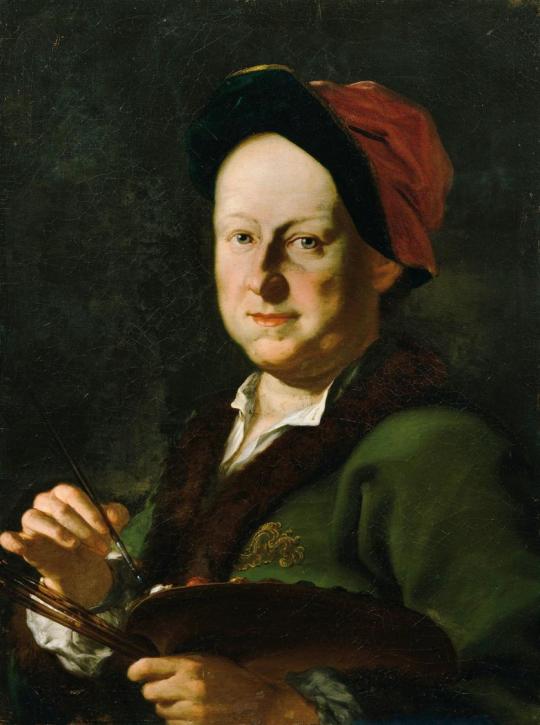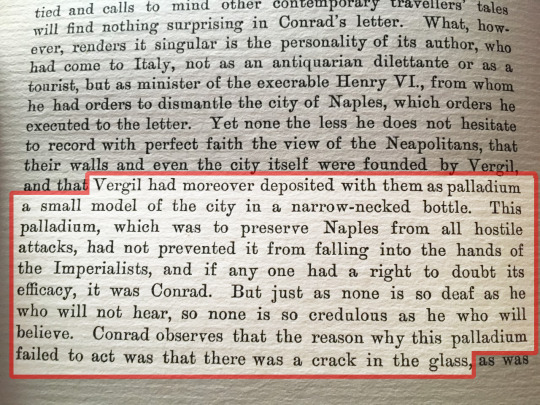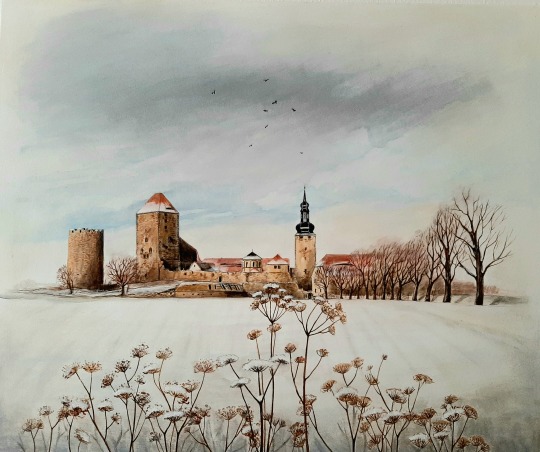#querfurt
Text

Schloss Vitzenburg, Querfurt, Germany
#art#photography#abandoned places#abandoned#abandoned house#urbexphotography#zombilenium#urbexsupreme#urbex#decay#schloss#schloss vitzenburg#castle#abandoned castle#germany#querfurt#piano
144 notes
·
View notes
Text

Anlässlich des Jubiläums 20 Jahre Städtepartnerschaft der Städte Querfurt /Sachsen-Anhalt Deutschland und Gizycko /Masuren Polen Auftragsarbeit. Neben den beiden Stadtwappen, Querfurter Burgkirche, Brunskreuz in Gizycko und Heiliger Brun von Querfurt auf dem Esel sind auch die Sagen von den "Neunlingen" und die "Feuertaufe" auf dem Bild dargestellt. www.querfurt.de/seite/328505/sagenwelt.html
#kunst#malerei#Querfurt#heike jäschke#Burg Querfurt#Straße der Romanik#Sagen in Mitteldeutschland#Heiliger Brun von Querfurt#Heiliger Brun auf dem Esel#Burgen und Schlösser in Mitteldeutschland
0 notes
Text
Hotel in Querfurt schnell finden – Rooms24

Buchen Sie jetzt das beste Hotel in Querfurt! - Rooms24
#Querfurt#deutschland#rooms24#rooms#ferienvermietung#ferienhaus#ferienwohnung#monteurzimmer#gästezimmer#unterkünfte#unterkunft#privat unterkünfte#hotelangeboten#luxury hotel#hotels#hotel#hotels and resorts
0 notes
Photo

Weihnachten auf der Burg #querfurt https://www.instagram.com/p/CmSE_nwL0Q5/?igshid=NGJjMDIxMWI=
0 notes
Photo

August Querfurt - Self portrait
8 notes
·
View notes
Text
On this day, December 14, in Type O Negative history:
Type O Negative play Klemme with Pungent Stench in Querfurt, Germany (1991)
youtube
Type O Negative play the Salt Air Pavillion with Danzig and Godflesh in Magna, UT (1994)
Type O Negative play Elysee Montmartre in Paris, France (1996)
Type O Negative play Colosseum in Munich, Germany (1999)
youtube
1,000,000 Type O Negative Fans Can't Be Wrong- Bloody Kisses is awarded Platinum status by the Recording Industry Association of America for having sold 1,000,000 copies (2000)
Type O Negative play Slim's in San Francisco, CA (2000)
#type o negative#peter steele#josh silver#kenny hickey#johnny kelly#heavy metal#goth#gothadelic#roadrunner records#bloody kisses#platinum#sal abruscato#vinland#pungent stench#danzig#godflesh#crossover#october rust#world coming down#twilight in paris#viva zwei 2rock#Youtube
4 notes
·
View notes
Note
Would you consider Svarog to be a phantom deity ? I think there is only one source that mentions him ( correct me if I’m wrong) and I’ve heard people say that he was created as a Slavic version of the Greek god Hephaestus. I don’t have any source for this but it is something I’ve heard some people say.
Hello!
That’s right, there’s only one source that mentions Svarog. However he wasn’t necessarily created as a Slavic version of Hephaestus, the story is a little more complicated than that.
In the entry for year 1114 of the Tale of Bygone Years the author includes a translated fragment of a Byzantine chronicle with a glossa that equates Hephaestus to Svarog and Helios to Daždbog. The Byzantine chronicle in question was originally writen in Greek by John Malalas, who was in turn drawing heavily from 3rd century BC „Egyptian History” by Manetho. In Malalas’ text names of Egyptian deities were replaced by the Greek gods viewed as their counterparts, so Ptah became Hephaestus and Ra became Helios. It’s believed that the glossa adjusted the names one more time, in the same fashion, so that they resonate with local readers. And thus we came to view Svarog as the god of fire and smithing similar to Hephaestus and Daždbog as the god of the sun akin to Helios.
We don’t actually know if the glossa was contributed by the translator of the Byzantine text into Slavonic (who was most likely Bulgarian according to Gieysztor) or by the author of the Tale of Bygone Years. So we don’t know in what year or in which region it was created either and we can’t say much about how familiar the writer was with pagan customs of Rus. It’s very likely that the author was a Christian monk.
Dažbog appears in the Tale of Bygone Years a few more times, most notably in an earlier entry for year 980 where he is mentioned as part of kniaz’ Volodymyr’s state pantheon of pagan gods.
„And Vladimir began to reign alone in Kiev. And he placed idols on the hill outside the palace: a Perun in wood with a silver head and a gold moustache, and Khors and Daždbog and Stribog and Simargl and Mokoš. And they offered sacrifices and called them gods, and they took their sons and daughters to them and sacrificed them to the devils. And they profaned the earth with their sacrifices, and Rus’ and that hill were profaned by blood. But God the merciful, who does not wish the death of sinners, on that hill stands today the church of Saint Vasilij, as we will relate later.”
„Then, during the reign of Oleg, son of the Unfortunate, the seed of discord was sown and flourished, the life of the son of Dažbog was extinguished, amid the internal struggles of the princes, curtailing their future generations.”
„The troops of the son of Dažbog were overcome with sorrow, humiliation entered the lands of Trojan”
- Tale of Bygone Years via Sources of Slavic Pre-Christian Religion, red. J. A. Álaverez-Pedrosa
He is also mentioned in passing in „Sermon by the Holy Father Saint John Chrysostom”.
*The varied spelling of his name as either „Daždbog” or „Dažbog” I lifted directly from the „Sources of Slavic Pre-Christian Religion” that I’m relying on for both the original text of the sources and their English translations.
Svarog does not appear again in any of the writings we know of — but Svarožic does. Svarožic is one of the best attested Slavic deities and the only one found in primary sources from more than one group of Slavs — we found mentions of him in both the primary sources about Polabian Slavs and in the homiletic works of Kyivan Rus.
To the best of my knowledge he is mentioned in:
Letter to Emperor Henry II from Bruno of Querfurt,
The Chronicle of Thietmar of Merseburg,
„Deeds of Bishops of the Hamburg Church” by Adam of Bremen (where he appears as Redigast, though the description of him and the town where he is worshipped matches the one by Thietmar, leading some slavists to view the name as an error and others as an epithet derived from the main place of worship),
„Sermon by Saint Gregory, Found in the Comments, on How the Ancient Nations, When Pagan, Worshipped Idols and Offered Sacrifices to Them, and Continue to Do So Now”,
„Sermon by the Holy Father Saint John Chrysostom, Archbishop of Constantinople, on How the First Pagans Believed in Idols”,
„Sermon by One Who Loves Christ and Is a Jealous Defender of the Righteous Faith”.
The name Svarožic is usually interpreted in one of two ways:
- as a patronymic meaning „the son of Svarog”,
- as a diminutive meaning „Little Svarog”.
Feel free to come to your own conclusions.
Now as to what I personally think about Svarog (please keep in mind that I have no formal education in slavic studies, and that my opinions may change in the future as a result of my personal research), well in my own practice I currently view him and Svarožic as the same deity, to which I refer as Svarožic. I decided to do so because this form is much better attested. Additionally I subscribe to the theory that the name Svarožic may have been used as a diminutive to avoid a taboo on pronouncing the true name of the deity. Although in my best hypocritical fashion I do not refer in diminutives to Perun about whom similar theories were put forward. In general the name taboos in Slavic culture are a very broad and fascinating subject that I couldn’t possibly summarize in here. To finish off I will note that there are many slavists who believe Svarožic to be the son of Svarog and also many who believe them to be one — so we are given a chance to make up our own minds and follow whatever the hell feels right to us personally.
Sources: Sources of Slavic Pre-Christian Religion, red. J. A. Álaverez-Pedrosa, Mitologia Słowian by Aleksander Gieysztor, Dawni Słowianie - wiara i kult by Stanisław Urbańczyk, Slavic Gods and Heroes by Kalik and Uchitel.
33 notes
·
View notes
Text
Medieval Influence in Goncharov (1973)
Something that I haven't seen discussed much in this site's new obsession with Goncharov (1973) is how Matteo JWHJ 0715 incorporates a particular thread of Neapolitan folklore into the setting -- which is fair, because I don't know how well-known this material is outside of Naples. Actually, I don't know how well-known it is within modern Naples, either, because I only know the medieval version.
See, the poet Virgil is heavily associated with Naples (his supposed tomb is there too), and by the medieval period a legend had grown up painting him as a sort of protector of the city. (Yes, this is why Andrey quotes the Aeneid in that one monologue.) Most of this protecting was done via the creation of magical objects -- popular legend attributed supernatural knowledge to Virgil, granting him genius in areas other than poetry... it's a whole thing. I dunno, we'll do an episode on it one of these days, assuming I can get my hands on the primary sources. But I digress.
In one scene, Goncharov is speaking with Ambrosini as they walk through the city streets. They stop for a moment of rather tense conversation near what seems to be a part of the old city walls, though it doesn't appear to correspond to any actually-extant architecture. Goncharov leans on the left side of an archway as he speaks, and you may have noticed the rather distressed-looking face carved into the arch. Here is a section from Comparetti's "Vergil in the Middle Ages":

(He's quoting from Gervase of Tilbury, if you're wondering.) So clearly the moment at the arch is meant to recall this and foreshadow that Goncharov's efforts are doomed to end only in tragedy, failure, and death.
We see this again on the trip to Pompeii -- there's a shot of the car, from a significant distance and height, with an old statue of an archer in the foreground. The way the car passes through the shot, it looks almost as though it's an arrow being fired from the archer's bow. Comparetti again:

Another bad omen, this time foreshadowing the destruction wrought in the Pompeii scene.
Finally, there is the case of the clock. Yes, I know, there are a lot of clocks in Goncharov (1973), it's a motif. I'm talking about that ornate one with the painting of an idealized city scene on the face. The one with a crack in the glass. Once more from Comparetti:

(That's Conrad von Querfurt, who was in Naples as an agent of the Holy Roman Empire in the late 12th century, if you want some context.) So does the clock evoking this glass bottle show us that Naples is still vulnerable to hostile powers, like the Russian mafia as represented by Goncharov? Is it part of the general statement of futility, of an inability to fight against one's inevitable doom? Honestly I think there's a lot of room for argument here.
So what can we take away from all of this? How do we better understand Goncharov (1973) through this lens? I don't know, I'm not a film critic. Honestly, I'm mostly working off of a presentation I half-recall seeing at a conference in Kalamazoo, and I don't remember what the conclusion was. They had a number of other examples, too, but all those citations are lost in time, like tears in the rain. (To be fully honest, I think I was distracted because it was nearly time for lunch and I hadn't eaten all day.) The only reason I can reconstruct any of it is because I have a copy of Comparetti on hand and I skimmed through the relevant section to see what jogged my memory.
In conclusion... i guess? Rewatch Goncharov (1973)? I don't know how to end this post.
Oh, and I hope the image descriptions on those quotations work for screen readers.
12 notes
·
View notes
Link

In 1656, what was now the electorate of Saxe-Meissen sub-divided itself to create Saxe-Merseburg, Saxe-Weissenfels, and Saxe-Zeitz to avoid future disputes.
#history#historyfiles#saxony#duchies#principalities#saxons#germany#germans#early modern europe#saxe-meissen#saxe-merseburg#saxe-weissenfels#weissenfels#saxe-zeitz
2 notes
·
View notes
Link
Vor allem in Städten wie Merseburg oder Querfurt und vor allem in Halle (Saale) kann die Suche nach einem Facharzttermin mitunter eine Geduldsprobe sein. Lange Wartezeiten können frustrierend sein, insbesondere bei akuten Beschwerden. Doch es gibt Strategien, mit denen du die...
0 notes
Link
Vor allem in Städten wie Merseburg oder Querfurt und vor allem in Halle (Saale) kann die Suche nach einem Facharzttermin mitunter eine Geduldsprobe sein. Lange Wartezeiten können frustrierend sein, insbesondere bei akuten Beschwerden. Doch es gibt Strategien, mit denen du die...
0 notes
Text


Danke an Hans-Helmut Wiencke
2012
2012 waren wir hier
02.06.2012 Dresden Altmarkt
03.06.2012 Coswig
04.08.2012 Burg Querfurt
0 notes
Text

Burg Querfurt im Winter
#kunst#malerei#emotions#contemporary art#heike jäschke#Burg Querfurt#Straße der Romanik#Mitteldeutschland#Stadt und Burg Querfurt
1 note
·
View note
Text
Hotel in Querfurt schnell finden – Rooms24

Suchen Sie ein Hotel in Querfurt? Wenn ja, dann haben Sie Glück! Querfurt ist eines der beliebtesten Reiseziele in Europa, und als solches gibt es eine große Auswahl an Hotels. Aber bei so vielen Optionen kann es schwierig sein zu wissen, wo man anfangen soll. Keine Sorge, – wir sind hier, um zu helfen. In diesem Blogbeitrag geben wir Ihnen einige Tipps, wie Sie das perfekte Hotel für Ihren Querfurt-Urlaub finden. Wir werden darüber sprechen, worauf Sie in einem Hotel achten sollten, wo Sie nach Hotels suchen und wie Sie verschiedene Hotels vergleichen können. Am Ende dieses Beitrags sind Sie ein Experte für die Suche nach Hotels in Querfurt... Weiterlesen
#Querfurt#deutschland#rooms#rooms24#ferienvermietung#ferienhaus#ferienwohnung#monteurzimmer#gästezimmer#unterkünfte#unterkunft#privat unterkünfte#hotelangeboten#luxury hotel#hotels#hotel#hotels and resorts
0 notes
Text
Holidays 10.15
Holidays
Amaryllis Day (French Republic)
Blind Americans Equality Day
Breast Health Day (EU)
Cayenne Festival (French Guiana)
Coup d'État Anniversary Day (Burkina Faso)
Day of Merriment (Republic of Molossia)
Fete Nationale de l'Evacuation (Evacuation Day; Tunisia)
Ghatasthapana (Nepal)
Global Handwashing Day
”I Love Lucy” Day
International Archeology Day
International Day of Older People (Australia)
International Day of Rural Women (UN)
International Power of One Day
King Father’s Commemoration Day (Cambodia)
Lucille Ball Day
Mahakiki (Hawaiian New Year Season begins)
Maths Day
Mertz of All Possible Mertzes
Mother’s Day (Malawi)
My Mom Is a Student Day
National Aesthetician Day
National Cherish Black Women Day
National Grouch Day
National HSA Awareness Day
National Latinix AIDS Awareness Day
National Pug Day
National Riley Day
National Shut-In Visitation Day
National Stations Day (UK)
National Tree Planting Day (Sri Lanka)
Pacific Leatherback Conservation Day (California)
Pregnancy and Infant Loss Remembrance Day (Canada, Italy, UK, US)
Pynkalycious Day
Rainbow Pickling Day
Rectification Day (Burkina Faso)
Sewing Lovers’ Day
Shwamae Su’mae Day (Wales)
Shine a Light Night
Teachers’ Day (Brazil)
Twist and Shout Day
White Cane Safety Day
World Anatomy Day
World Day of Amblyopia
World Home Artificial Nutrition Day
World Rural Women’s Day (Malawi)
World Students’ Day (India, UN)
Food & Drink Celebrations
Champagne Day
Dine With TV Dinners On the Floor Night
National Cheese Curd Day
National Chicken Cacciatore Day
National Lemon Bar Day
National Mushroom Day
National Red Wine Day
National Roast Pheasant Day
National Shawarma Day (Canada)
3rd Sunday in October
Brown Ale Day [3rd Sunday]
I Am An American Day (Florida) [3rd Sunday]
Mother’s Day (Argentina) [3rd Sunday]
National Police Officer’s Spouses’ Day [3rd Sunday]
Sunday School Teacher Appreciation Day [3rd Sunday]
World Toy Camera Day [3rd Sunday]
Independence Days
Parvia (Declared; 2019) [unrecognized]
Feast Days
Bruno of Querfurt (Christian; Saint)
Cúan of Ahascragh (Christian; Saint)
Dashain begins [Varies from the Bright Moon; lasts 15 days] (a.k.a. ...
Dashain (Nepal)
Dasara (Hindi)
Dashera (Hindus in India)
Dassain (Bhutan)
Dussehra (India)
Ghatasthapana [1st Day of Dashain]
Mohani (Katmandu Valley)
Navaratri (Hindus in India)
Vijaya Dashami (Nepal)
Dragonbunny (Muppetism)
Equirria (October Equus, sacrifice of a horse to Mars; Old Roman Empire)
Feast of the Three Noble Ladies (Ancient Egypt)
Hobbes (Positivist; Saint)
Hospicius (a.k.a. Hospis; Christian; Saint)
Ides of October (Ancient Rome)
James Tissot (Artology)
John Vanderlyn (Artology)
Ludi Capitolini (Jupiter games; Ancient Rome)
Poetry Day (Ancient Rome)
Ralph Albert Blakelock (Artology)
Richard Speck Day (Church of the SubGenius; Saint)
Teresa of Ávila (founded Reformation of the Barefoot Carmelites; Christian; Saint)
Thecla of Kitzingen (a.k.a. Tecla; Christian; Saint)
Winter Nights: Day of the Freya and the Disir (Pagan)
Yet Another Noodle Day Day (Pastafarian)
Lucky & Unlucky Days
Sakimake (先負 Japan) [Bad luck in the morning, good luck in the afternoon.]
Premieres
The Affluent Society, by John Kenneth Galbraith (Economy Book; 1958)
Alice Plays Cupid (Disney Cartoon; 1925)
The Barbary Pirates, by C.S. Forester (History Book; 1953)
Boom at the Top or Angry Young Moose (Rocky & Bullwinkle Cartoon, S5, Ep. 221; 1963)
Bread and Wine, by Ignazio Silone (Novel; 1937)
Charlotte’s Web, by E.B. White (Children’s Book; 1952)
The Cincinnati Kid (Film; 1965)
Clock Cleaners (Disney Cartoon; 1937)
Curb Your Enthusiasm (TV Series; 2000)
The Dragon Reborn, by Robert Jordan (Novel; 1991) [Wheel of Time #3]
Elvis’ Christmas Album, by Elvis Presley (Album; 1957)
Figaro and Cleo (Disney Cartoon; 1943)
Fight Club (Film; 1999)
The Fires of Heaven, by Robert Jordan (Novel; 1993) [Wheel of Time #5]
For Once in My Life, by Stevie Wonder (Song; 1968)
Fur, Fur Away or Hair Today, Gone Tomorrow (Rocky & Bullwinkle Cartoon, S5, Ep. 222; 1963)
Goodbye Yellow Brick Road, by Elton John (Song; 1973)
Good Golly Miss Molly, recorded by Little Richard (Song; 1956)
The Great Dictator (Film; 1940)
The Heart of Saturday Night, by Tom Waits (Album; 1974)
Heidi (Film; 1937)
I Love Lucy (TV Series; 1951)
I Wish I Had Wings (WB MM Cartoon; 1932)
The Jazz Fool (Disney Cartoon; 1929)
Jay and Silent Bob Reboot (Film; 2019)
La Mer, by Claude Debussy (Symphonic Suite; 1905)
The Last Duel (Film; 2021)
The Lion King (Broadway Musical; 1997)
Lord of Chaos, by Robert Jordan (Novel; 1994) [Wheel of Time #6]
Mr. Wonderful (Film; 1993)
The Nightmare Before Christmas (Animated Film; 1993)
The Night the City Sang, by Peter Desbarats (Poetry; 1977)
Nowhere Boy (Film; 2010)
Paint Your Wagon (Film; 1969)
Porky’s Naughty Nephew (WB LT Cartoon; 1936)
The Power of Positive Thinking, by Norman Vincent Peale (Self-Help Book; 1952)
Power Windows, by Rush (Album; 1985)
Prince Caspian, by C.S. Lewis (Novel; 1951) [The Chronicles of Narnia #2]
RED (Film; 2010)
Rock Me Amadeus, by Falco (Song; 1985)
Rudy (Film; 1993)
Sabrina (Film; 1954)
The Skin of Our Teeth, by Thornton Wilder (Play; 1942)
Slip Sliding’ Away, by Paul Simon (Song; 1977)
Social Lion (Disney Cartoon; 1954)
Soup’s On (Disney Cartoon; 1948)
The Straight Story (Film; 1999)
Surfing with the Alien, by Joe Satriani (Album; 1987)
Team America: World Police (Animated Film; 2004)
To Have and Have Not, by Ernest Hemingway (Novel; 1937)
Tupelo Honey, by Van Morrison (Album; 1971)
Two Scent’s Worth (WB MM Cartoon; 1955)
Why Not Me, by The Judds (Album; 1984)
Today’s Name Days
Aurelia, Theresia (Austria)
Rezika, Tekla, Tereza, Terezija, Valter (Croatia)
Tereza (Czech Republic)
Hedevig (Denmark)
Eda, Ede, Hädi, Häidi, Heda, Hedi, Hedvig, Heidi, Heivi (Estonia)
Helvi, Heta (Finland)
Thérèse (France)
Aurelia, Franziska, Therese, Theresia (Germany)
Loukianos (Greece)
Teréz (Hungary)
Teresa (Italy)
Eda, Ede, Hedviga, Jadviga (Latvia)
Domantė, Gailiminas, Leonardas, Teresė (Lithuania)
Hedda, Hedvig (Norway)
Brunon, Gościsława, Jadwiga, Sewer, Tekla, Teresa (Poland)
Luchian (Romania)
Terézia (Slovakia)
Teresa (Spain)
Hedvig, Hillevi (Sweden)
Lucian (Ukraine)
Essence, Terence, Teresa,Terrance, Terrence, Terri, Terry, Tess,Tessa, Theresa, Trace, Tracey, Traci, Tracy (USA)
Today is Also…
Day of Year: Day 288 of 2024; 77 days remaining in the year
ISO: Day 7 of week 41 of 2023
Celtic Tree Calendar: Gort (Ivy) [Day 13 of 28]
Chinese: Month 9 (Ten-Xu), Day 1 (Bing-Wu)
Chinese Year of the: Rabbit 4721 (until February 10, 2024)
Hebrew: 30 Tishri 5784
Islamic: 30 Rabi I 1445
J Cal: 18 Shù; Foursday [18 of 30]
Julian: 2 October 2023
Moon: 1%: Waxing Crescent
Positivist: 8 Descartes (11th Month) [Hobbes]
Runic Half Month: Wyn (Joy) [Day 4 of 15]
Season: Autumn (Day 22 of 89)
Zodiac: Libra (Day 22 of 30)
Calendar Changes
菊月 [Júyuè] (Chinese Lunisolar Calendar) [Month 9 of 12] (Chrysanthemum Month) [Dog Month]
1 note
·
View note